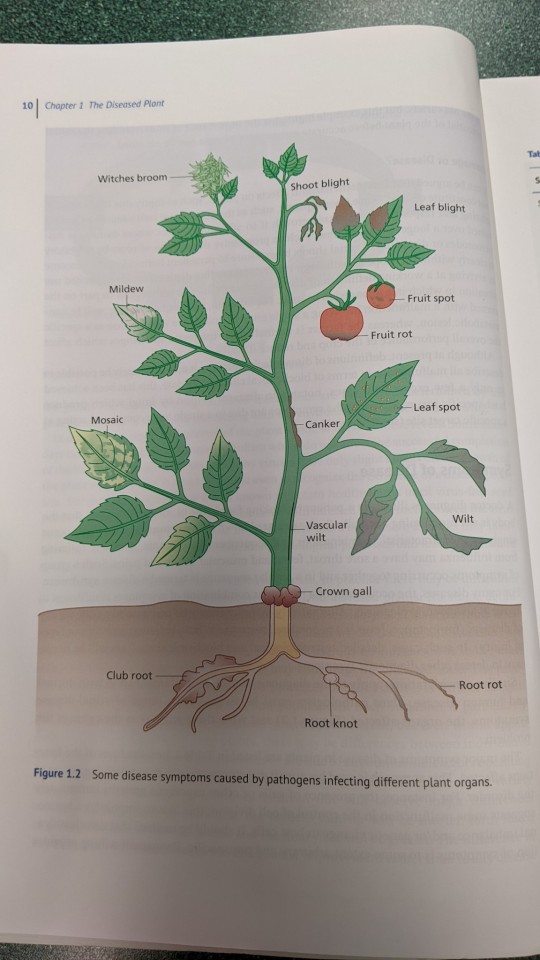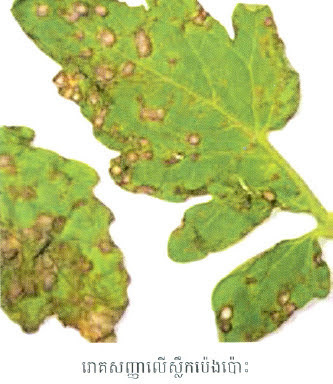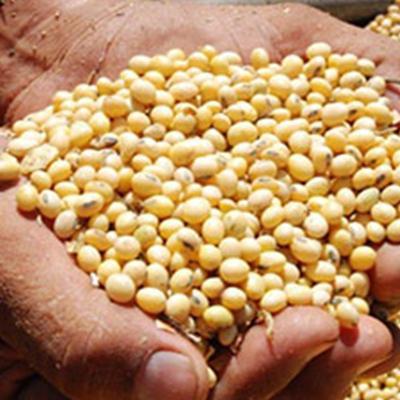#septoria
Explore tagged Tumblr posts
Text
oh I saw this tomato for sale at the farmer’s market

this is my son gunch who has every disease.. plaes help
#seriously#from about twelve feet away (I had a booth next to it and MY tomato plants were BEAUTIFUL)#i saw#powdery mildew#septoria#nitrogen deficiency#early blight#some root fungus diseases I couldn’t ID#on ONE PLANT#plus they had them out where everyone could touch them so place your bets on tobacco mosaic virus
10K notes
·
View notes
Text
AHDB fungicide data reveal how new products performed
The AHDB’s fungicide performance trials confirm that the new SHDI fungicide from Syngenta is a valuable addition for septoria control. Approved in April 2024, Miravis Plus also offers a step up in the control of ramularia in barley and fusarium head blight in wheat. However, AHDB data also confirm that the new addition is less effective on brown rust, with the best performance in the 2024 trial…
0 notes
Text
Plant genotype-specific modulation of Clonostachys rosea-mediated biocontrol of septoria tritici blotch disease on wheat
http://dlvr.it/T7gf4Z
0 notes
Text
One of my tomato plants is dying. It has black spots, which upon research seems to be a fungal infection called Septoria. I'm sad and now worried that my other plant babies will start showing signs of infection.
0 notes
Text
Air circulation could help treat Septoria leaf spot
http://dlvr.it/SvvTBV
0 notes
Text
ជំងឺផ្សិតសិបតូរីយ៉ាអុចស្លឹក
ឈ្មោះទូទៅជាភាសាខ្មែរ: ជំងឺផ្សិតសិបតូរីយ៉ាអុចស្លឹក ឈ្មោះទូទៅជាភាសាអង់គ្លេស: Septoria spot ឈ្មោះវិទ្យាសាស្ត្រ: Septoria lycopersici គ្រួសារ: Mycosphaerellaceae ការពិពណ៌នា ស្នាមអុចតូចៗរាងរង្វង់វិវត្តន៍នៅលើស្លឹក និងម្តងម្កាលនៅលើមែកឬដើម និងផ្លែ ។ ស្នាមអុចមើលឃើញជាដំបូងនៅលើផ្ទៃស្លឹកខាងក្រោម ប៉ុន្តែវាលូតលាស់យ៉ាងរហ័ស និងត្រូវបានឃើញភ្លាមនៅផ្ទៃខាងលើ ។…

View On WordPress
0 notes
Text
Understanding Soybean Diseases: Common pest and fungal infections and their impact

Soybean is one of the most important crops worldwide, serving as a vital source of protein and oil for both humans and animals. However, soybean cultivation is not without its challenges, and among the major hurdles faced by soybean farmers are diseases caused by pests and fungal infections. These diseases can severely impact soybean yields and quality, leading to significant economic losses for farmers.
Common Soybean Diseases: Pests and Fungal Infections
1. Soybean Rust (Phakopsora pachyrhizi)
The first common problem is Soybean rust. It is one of the most destructive diseases affecting soybean crops globally. It is caused by the fungus Phakopsora pachyrhizi and can lead to significant yield losses if not managed effectively. The disease first appears as tiny, yellowish-orange spots on the lower leaves of the soybean plant and gradually spreads to the upper leaves. As the infection progresses, dark-colored pustules filled with spores develop on the leaf surfaces.
2. Soybean Cyst Nematode (Heterodera glycines)
The second common disease is Soybean cyst nematode. It is a microscopic roundworm that can infect soybean roots and cause considerable damage. It is a major concern for soybean farmers, as it can lead to stunted plant growth, reduced nodulation, and poor nutrient uptake, ultimately leading to decreased yields.
3. Phytophthora Root and Stem Rot (Phytophthora sojae)
Phytophthora root and stem rot is a serious fungal disease that affects soybean plants during wet and warm growing seasons. The disease attacks the roots and stems, causing wilting, yellowing, and eventual plant death. This disease can lead to significant yield losses, especially in areas with poorly drained soils.
4. Sudden Death Syndrome (Fusarium virguliforme)
Sudden Death Syndrome (SDS) is caused by the fungus Fusarium virguliforme and is a significant threat to soybean crops. It typically appears during early reproductive stages, causing yellowing and necrosis between the veins of the leaves. As the disease progresses, the affected leaves may drop prematurely, leading to reduced yields.
5. Brown Spot (Septoria glycines)
Brown stem rot is another fungal disease that affects soybean stems, leading to lodging and reduced yields. It primarily thrives in cooler regions with excessive soil moisture. Infected plants exhibit internal browning of the stem pith and may develop root rot as well. Brown stem rot can remain unnoticed until late in the growing season when symptoms become more apparent.
The Impact of soybean diseases on crop yield
Soybean diseases pose significant challenges to farmers, impacting both crop yield and quality. These diseases can cause:
Reduced Yield: Infected soybean plants often experience reduced seed production due to defoliation, premature death, and weakened stems. Yield losses can range from 10% to 80%, depending on the severity of the disease and the timing of its occurrence.
Decreased Quality: Diseases like soybean rust can affect the quality of soybean seeds by reducing oil and protein content. This can result in lower market prices for farmers and decreased profitability.
Increased Costs: To manage and control diseases effectively, farmers often need to invest in disease prevention and treatment measures. These can
broad-spectrum fungicide contains Carbendazim as its active ingredient, making it highly effective against a wide range of fungal infections affecting soybean crops.
Addressing soybean diseases: The Role of Fungicides
To combat soybean diseases effectively, a well-rounded approach that includes cultural practices, resistant varieties, and chemical control is essential. Fungicides play a vital role in managing fungal diseases, as they can effectively suppress pathogen growth and prevent further spread.
Introducing Vitavax Powder: The Ideal Fungicide Solution
Among the range of fungicide products offered by Dhanuka Agritech, Vitavax Powder stands out as an ideal solution for soybean disease management. This systematic and broad-spectrum fungicide contains Carbendazim as its active ingredient, making it highly effective against a wide range of fungal infections affecting soybean crops.
Key Benefits of Vitavax Powder:
Disease Control: Vitavax Powder effectively controls major fungal diseases like soybean rust, phytophthora root and stem rot, sudden death syndrome, and brown spot. Its systemic action ensures that the entire plant is protected from the early stages of infection, providing a longer-lasting shield against diseases.
Easy Application: The powder can be easily applied to the soil or seed treatment, ensuring uniform distribution of the fungicide. Its user-friendly application process makes it a convenient choice for farmers of all scales.
Enhanced Crop Health: By controlling fungal diseases, it promotes overall crop health and vigor. Healthy plants are better equipped to withstand stress factors and produce higher yields.
Cost-Effectiveness: It offers excellent value for money due to its efficiency in disease control. The reduction in yield losses and improved crop health justify the investment in this premium fungicide.

Best practices for soybean disease management
In addition to using Vitavax Powder, there are several best practices that farmers can adopt to effectively manage soybean diseases:
Crop Rotation: Practicing crop rotation can help break the disease cycle and reduce the buildup of soil-borne pathogens that cause diseases like Phytophthora root and stem rot.
Timely Planting: Early planting can help soybean plants establish stronger root systems, making them more resilient to diseases.
Proper Irrigation: Maintaining appropriate soil moisture levels can minimize the conditions suitable for fungal pathogen development.
Monitoring and Scouting: Regularly monitoring fields and scouting for early signs of diseases can help identify issues promptly, allowing for timely intervention.
Conclusion
Soybean diseases caused by pests and fungal infections can have a severe impact on crop yield and quality. It is crucial for farmers to understand these diseases and employ effective disease management strategies to protect their soybean crops. Dhanuka Agritech's Vitavax Powder, a powerful fungicide, offers an excellent solution to combat common soybean diseases. By incorporating Vitavax Powder into their crop protection program, farmers can mitigate the risks associated with fungal infections, reduce yield losses, and ensure a healthy and profitable soybean harvest.
Remember, early detection and timely treatment are key to effectively managing soybean diseases. By partnering with trusted agricultural suppliers like Dhanuka Agritech and utilizing innovative products like Vitavax Powder, farmers can safeguard their soybean crops and optimize their agricultural practices for a sustainable future.
Source url: https://readnewsblog.com/understanding-soybean-diseases-common-pest-and-fungal-infections-and-their-impact/
0 notes
Text
Tree Removal in Huntsville
Trees are an important part of any landscape. They add beauty, provide shade, and improve the air quality in neighborhoods. They also need proper care in order to remain healthy and functional. A professional tree removal Huntsville AL service can help keep trees looking their best and prevent damage caused by storms, high winds, or ice. They can even help prevent power interruptions by keeping trees clear of electric lines.
There are a number of factors that influence the cost of tree removal services. The size of the tree, its location on your property, and the difficulty in accessing it will all affect price. You may also need to consider the cost of removing any stumps or debris left behind after tree removal.
The climate in Alabama makes it suitable for many types of trees, including fruit trees, evergreens, shrubs, and hedges. Its warm weather also provides good conditions for a variety of flowering trees, such as peach and azalea. However, there are some diseases that can be a problem for certain species of trees, such as the spot anthracnose and septoria leaf spot.
When it comes to a tree’s health, pruning is key. It helps reduce the risk of disease, insect infestation, and other problems, and it can also increase the lifespan of a tree. A professional tree service can ensure your trees are properly pruned and trimmed, so they stay healthy and safe for years to come.

0 notes
Text
Like most gardeners, I talk to my plants.
Called my pawpaw a lazy sack of shit for not bearing fruit this year.
#Gardening#Profanity#Hobbitcore#pawpaw tree#Fruit trees#Native plants#Swearing and gardening go together like heirloom tomatoes and septoria#No matter what you do it's all over it
35 notes
·
View notes
Text
How To Treat Septoria Leaf Spot Of Carnations
How To Treat Septoria Leaf Spot Of Carnations
[ad_1]
Carnation Septoria leaf spot is a common but very common destructive disease that spreads quickly from plant to plant. The good news is this Septoria leaf spot of carnations, which shows up in warm, humid conditions, is relatively easy to handle if caught shortly after the first onset of symptoms. Read Learn more about the symptoms of carnation septoria and what you can do about it this…
View On WordPress
0 notes
Text
Buğdayda kök boğazı çürüklüğü hastalığına dikkat
Buğdayda kök boğazı çürüklüğü hastalığına dikkat
Buğdayda kök boğazı çürüklüğü hastalığına dikkat. Adana Tarım ve Orman İl Müdürlüğü buğday üreticilerini kök ve kök boğaz çürüklüklerine karşı uyardı.
Buğdayda Kök Boğazı Çürüklüğü Hastalığına Dikkat
İl Müdürlüğünden yapılan yazılı açıklamada; “İlimizde Buğday ekimi Kasım ayında başlamış, Aralık ayı itibariyle tamamlanmıştır. Çıkışlarda herhangi bir olumsuzluk yaşanmamıştır. Buğdaylar fizyolojik…
View On WordPress
#Adana Tarım ve Orman İl Müdürlüğü#Bitki Koruma Ürünleri#buğday hastalıkları#buğdayda kardeşlenme#featured#kök boğazı hastalığı#Kök ve Kök Boğazı#Külleme hastalığı#Septoria#Tarım ve Hayvancılık Haberleri#üst gübreleme
0 notes
Text
Air circulation could help treat Septoria leaf spot
http://dlvr.it/Svv6hp
0 notes
Text
Rotam desarrolla productos para prevenir la Mancha Marrón de la Hoja en Soja.
Rotam desarrolla productos para prevenir la Mancha Marrón de la Hoja en Soja.
A pesar de la falta de precipitaciones en la Región Núcleo, especialmente el Norte y Oeste de Buenos Aires además de las provincias de Santa Fe y Entre Ríos, se reportan importantes avances de Septoria en el cultivo de soja.
Las condiciones climáticas para esta campaña se han ido cumpliendo según lo previsto, sobre todo en lo que respecta a las elevadas temperaturas y la escasez de…
View On WordPress
0 notes
Text
Agricultores precisam ficar atentos (e agir contra) à presença da mancha-parda nas lavouras de soja
Agricultores precisam ficar atentos (e agir contra) à presença da mancha-parda nas lavouras de soja
Diante da relevância e protagonismo da cultura da soja para o agronegócio brasileiro, é necessário realizar exercícios constantes de análise de desafios e cuidados essenciais para a produção do grão e a manutenção de bons níveis de produtividade
Um dos principais transtornos estão na conta da septoriose, também conhecida como mancha-parda, doença causada pela ação do fungo Septoria glycines na…
View On WordPress
1 note
·
View note
Link
0 notes
Text
silicon fertilizer
Introduction
Seema mineral is a leading manufacturer and supplier of silicon fertilizer in India. Silicon, which makes up about 25% of the Earth's crust, is the seventh most abundant element in the universe and the second most abundant element on Earth, after oxygen. Silicon is one of nature's most useful materials. It is a crucial component in microelectronics and computer chips, the most common component of sand, and a vital element for life in both plants and animals. It is also used to make dynamos, engine blocks, machine tools, and silicons. Many plants can accumulate it in large quantities, similar to macronutrients because it is found in the Earth's crust. Si is generally not regarded as a necessary component of plants, despite its numerous agricultural benefits. Silicon is found both naturally as the oxide (silica) and in fertilizers as silicates. Through its roots, the plant absorbs silicon as silicic acid. For more information contact us at– +91 941416944
Benefits of Silicon fertilizers
Benefits of Silicon on Plant Growth Silicon is the seventh most abundant element in the universe and the second most abundant element on Earth, after oxygen, accounting for approximately 25% of the planet's crust. Silicon is one of nature's most useful materials. It is the most common component of sand and an essential element for life in both plants and animals. It is also used to make dynamo, engine blocks, machine tools, and silicons.
It also plays an important role in microelectronics and computer chips. Many plants can accumulate it in large quantities, similar to macronutrients, because it is found in the Earth's crust. Si is generally not regarded as a necessary component of plants, despite its numerous agricultural benefits. Silicon is found both naturally as the oxide (silica) and in fertilizers as silicates. Through its roots, the plant absorbs silicon as silicic acid. It travels within the plant to active growth points, where it forms a complex with an organic compound in the cell walls, strengthening them.
Beneficial effects on plants of Silicon fertilizers
Numerous pot-, hydroponic-, and field-based studies have demonstrated that Si has beneficial effects on plants. Silicon fertilizer provides resistance to bacterial and fungal diseases, decreases some abiotic stress such as temperatures, salinity, heavy metal and aluminum toxicity, and promotes upright growth (stronger and thicker stems, shorter internodes). Silicon also enhances growth and yield of all annual and vegetable crops.
Silicon fertilizers according to scientific studies
Silicon, according to scientific studies, improves plant resistance to numerous insect pests and diseases, including powdery mildew, septoria, and eye-spot. When there is insufficient irrigation, silicon has a positive effect on the biomass yield. Stomatal conductivity, relative water content, and water potential remained higher in silicon-treated plants that were subjected to draught. It aids in the growth of larger and thicker leaves, thereby limiting transpirational water loss and lowering water consumption.
Silicon has a significant impact on the development of plant roots, allowing for faster growth and improved root resistance in dry soils.
Silicon is a liquid or solid-state fertilizer that can be applied to plants at any time during the growing season. It can be Biacsil, Silifert, or Nitrosil, among other examples.
modern farm technology of Silicon fertilizers
Silicon fertilizers, which are considered a modern farm technology alongside microbiological fertilizers, are still not widely used in agriculture. Silicon-based fertilizers can be utilized by integration, conventional, or organic farmers alike due to its natural origin. Farmers can record their use of silicon fertilizers in the AGRIVI system, regardless of the type of farming. They are
able to keep track of how much fertilizer was used up and how much it cost across all of their crop productions and fields.

0 notes